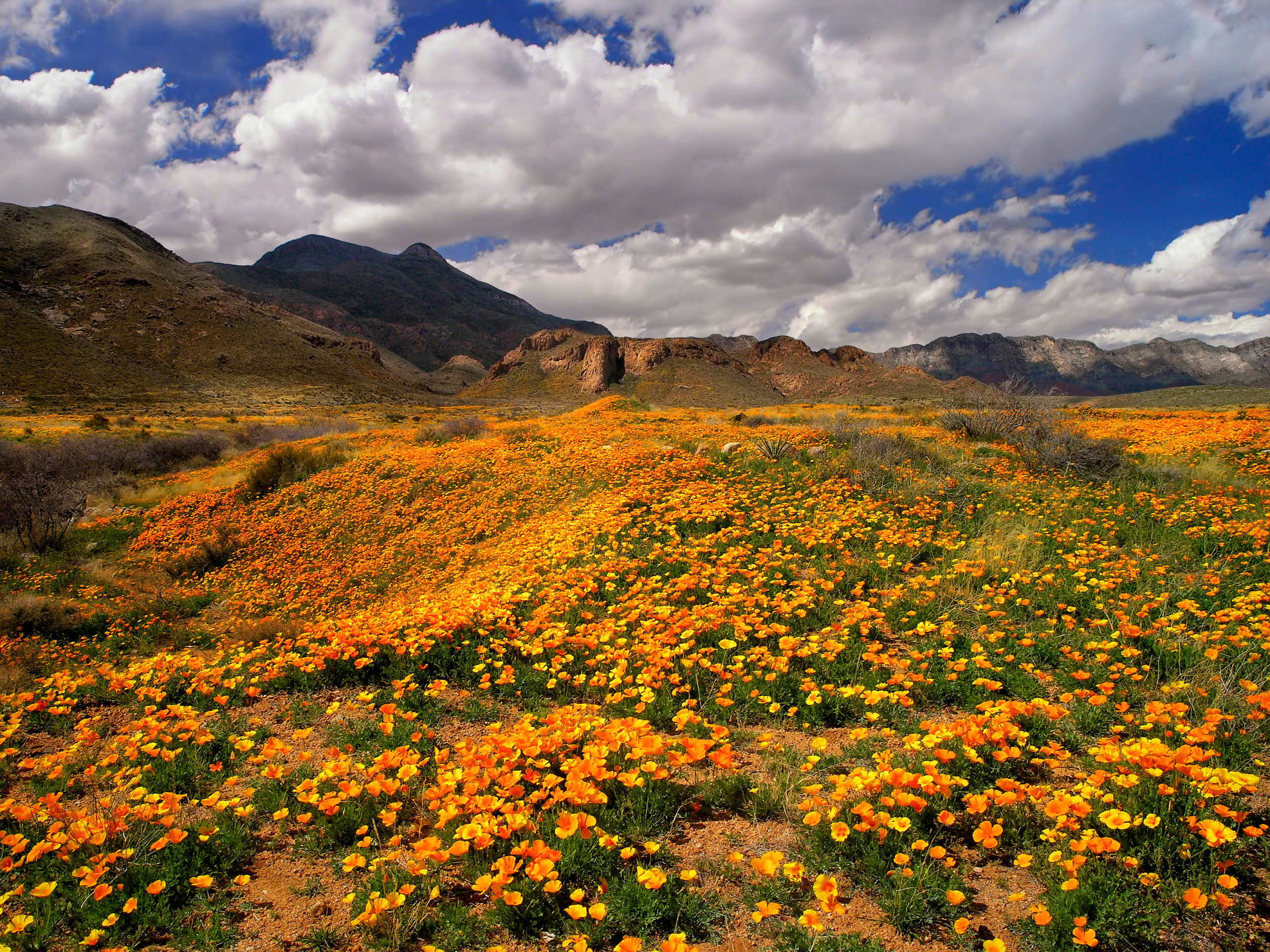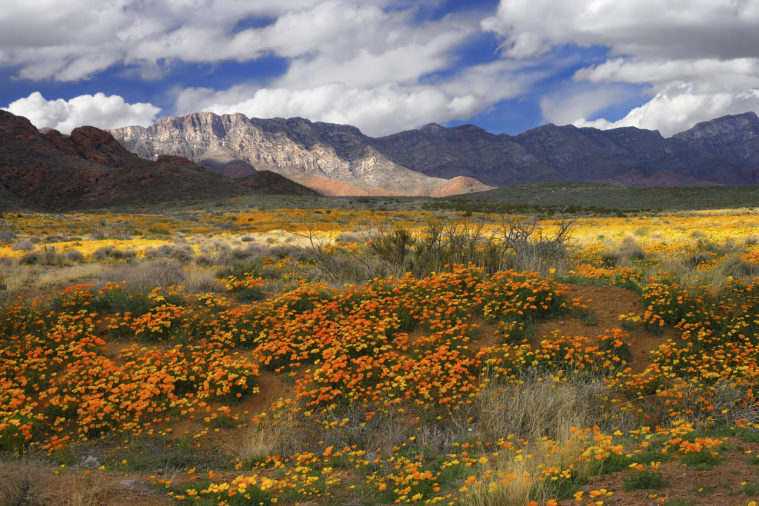
Dear Biden: Protect Our Poppies
Home to vibrant flowers, orioles, mountain lions and more, advocates seek to protect the acres around a former El Paso firing range.
Update March 21, 2023: Today, President Joe Biden will dedicate the Castner Range, a 7,081-acre former Army artillery facility in the Franklin Mountains near El Paso, as a national monument.
A yellow and orange blanket of petals stretched across the foot of the mountains. Birds with red bellies darted through the clear blue sky. These were the wonders I saw when I visited public land near Castner Range about seven years ago. It was spring, the time when every year, the Mexican gold poppy blooms.
Home to 7,081 acres with a variety of wild flora and fauna, Castner Range is a marvel of nature in El Paso, and a place of historical and environmental significance. The site is named for General Joseph Castner, a U.S. Army brigadier general who fought in WWI. For years, it was used for weapons training by U.S. Army soldiers stationed at Fort Bliss. But since the range closed in the mid 1960s it has been under constant threat from developers, and various groups have been fighting to preserve it. Today, advocates are pushing hard to preserve the land by obtaining national monument status.
National monuments are pieces of land or historical places that are protected by Congress through legislation, or by the president through the Antiquities Act of 1906. National monuments can also be designated through public local input, which is what the Castner Range Coalition is attempting to accomplish. Once designated, the sites are then overseen by one of the seven land-management agencies of the country, such as the Bureau of Land Management. So far, there are only two national monuments in Texas, the Alibates Flint Quarries and the Waco Mammoth.
Like the Castner Range, both other national monuments in Texas are places of historical and natural significance. Although the Waco Mammoth is relatively new, designated a national monument on July 10, 2015, by executive order, it receives approximately 100,000 visitors annually from all 50 states and 70 foreign countries. If the Castner Range were to be designated a national monument, it could attract visitors from other parts of the country, and potentially bring international recognition as well.
A stretch of desert carved by seismic activity and other natural processes over a billion years ago, Castner Range has significant historical and archaeological components, said Janaé Reneaud Field, the executive director of the Frontera Land Alliance and leader of the Castner Range Coalition. “It has wonderful biological aspects, from alluvial fans to orioles. [It serves as] a habitat for mountain lions and unique plants that grow there, like the Mexican poppy,” said Field. “It’s a major piece [of land] for that region, that connectivity of land. It also provides an opportunity for a community that doesn’t have a lot of access to open space.”

El Paso is already known for outdoor activities such as hiking. Trails in the Franklin Mountains allow people to see the city from different angles, and to observe wildlife. But visitors are not allowed to cross into Castner Range territory since it is owned by the Department of Defense; obtaining national monument status would both open it up and preserve it.
Field became the leader of the coalition pushing for the project because she herself believes that open space is critical for the future of “my daughter, other people of the community, and the region, so they [can] have a place to regenerate their soul. I think it’s very important for people’s mental and physical health to have that connection to nature,” she said. “To see what was created, and in my belief what God created. It allows people like my family to see the insects and the flowers, [to] just have wonder in their lives and see all the beauty.”
Field’s Castner Range Coalition is the current team of organizations advocating for President Biden to designate the area as a national monument. And they are asking for help from the public by gathering letters of support. So far, approximately 116,000 people have joined the call for the preservation of the Castner Range. Supporters include members of Field’s Frontera Land Alliance and of the Franklin Mountains Wilderness Coalition.
“Before [the Frontera Land Alliance] became involved, there were proposals along the way by different organizations and companies to develop [the land], [but] other groups stopped them by opposing them and the development,” Field said. “The whole purpose is, because it can still happen, you know, people can still want to develop land on the range and we can’t let that happen.”
Field recollects many enjoyable moments spent with her family at El Paso’s Museum of Archaeology, which sits right outside the boundary of the Castner Range. Enjoying the open space, the animals and the plants, she understood that the land needed to be preserved years ago. Today, she continues to push on.
“I’m hoping something happens and praying, but I don’t know, they don’t tell us, we don’t get information. We just keep working at it [and] keep gaining support. [We] keep educating people on the project and one day, we’re hoping to get a phone call saying that the president decided to make it a national monument,” Field said. “It really is a community led effort. There’s a lot of local and national organizations involved with the effort. [The] community is really behind this by showing their support through letters of support, attending meetings and it’s just the community that is asking President Biden.”



